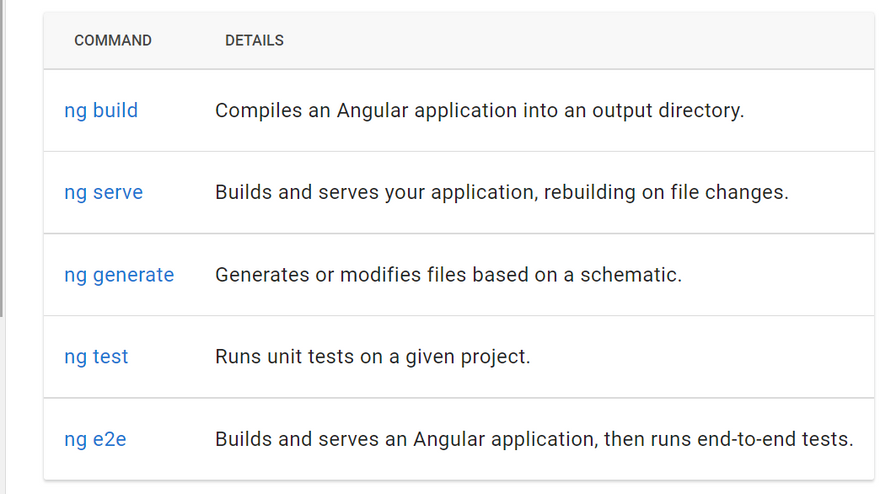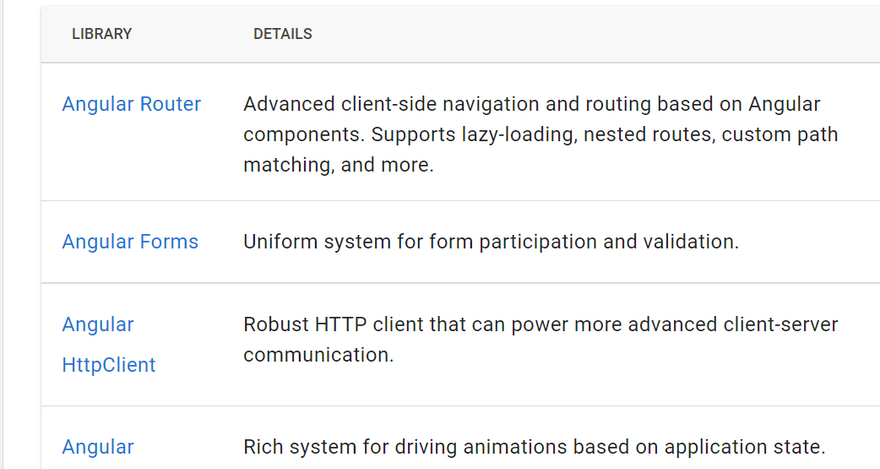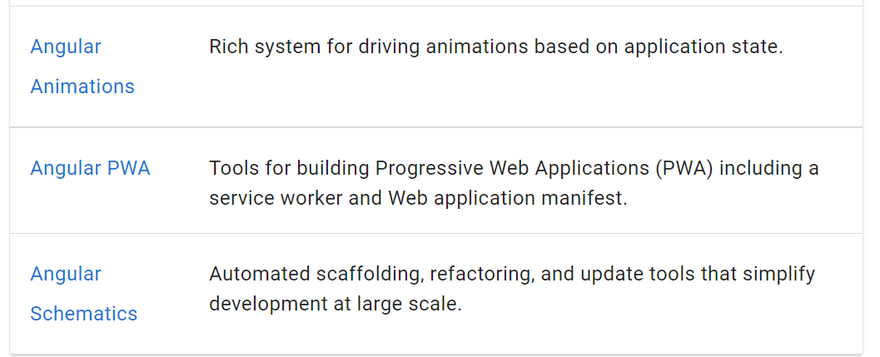what-is-angular
QUESTION
What is Components and how to specify it.
What are the Angular-specific information inside @Component() decorator
What are the way to define template?
Where property binding and event listener defined.
How dependency injected.
- Angular is a development platform, built on TypeScript. As a platform, Angular includes:
- A component-based framework for building scalable web applications
- A collection of well-integrated libraries that cover a wide variety of features, including routing, forms management, client-server communication, and more
- A suite of developer tools to help you develop, build, test, and update your code.
With Angular, you're taking advantage of a platform that can scale from single-developer projects to enterprise-level applications. Angular is designed to make updating as straightforward as possible, so take advantage of the latest developments with minimal effort. Best of all, the Angular ecosystem consists of a diverse group of over 1.7 million developers, library authors, and content creators.
Angular applications: The essentials
This section explains the core ideas behind Angular. Understanding these ideas can help you design and build your applications more effectively.
Components
Components are the building blocks that compose an application. A component includes a TypeScript class with a @Component() decorator, an HTML template, and styles.The @Component() decorator specifies the following Angular-specific information:
- A CSS selector that defines how the component is used in a template. HTML elements in your template that match this selector become instances of the component.
- An HTML template that instructs Angular how to render the component
- An optional set of CSS styles that define the appearance of the template's HTML elements
import { Component } from '@angular/core';
@Component({
selector: 'hello-world',
template: `
<h2>Hello World</h2>
<p>This is my first component!</p>
`
})
export class HelloWorldComponent {
// The code in this class drives the component's behavior.
}
To use this component, you write the following in a template:
<hello-world></hello-world>
When Angular renders this component, the resulting DOM looks like this:
<hello-world>
<h2>Hello World</h2>
<p>This is my first component!</p>
</hello-world>
Angular's component model offers strong encapsulation and an intuitive application structure. Components also make your application painless to unit test and can improve the general readability of your code.
Templates
Every component has an HTML template that declares how that component renders. You define this template either inline or by file path.
Angular adds syntax elements that extend HTML so you can insert dynamic values from your component. Angular automatically updates the rendered DOM when your component's state changes. One application of this feature is inserting dynamic text, as shown in the following example.
<p>{{ message }}</p>
import { Component } from '@angular/core';
@Component ({
selector: 'hello-world-interpolation',
templateUrl: './hello-world-interpolation.component.html'
})
export class HelloWorldInterpolationComponent {
message = 'Hello, World!';
}
When the application loads the component and its template, the user sees the following:
<p>Hello, World!</p>
Notice the use of double curly braces—they instruct Angular to interpolate the contents within them.
Angular also supports property bindings, to help you set values for properties and attributes of HTML elements and pass values to your application's presentation logic.
<p
[id]="sayHelloId"
[style.color]="fontColor">
You can set my color in the component!
</p>
Notice the use of the square brackets—that syntax indicates that you're binding the property or attribute to a value in the component class.
Declare event listeners to listen for and respond to user actions such as keystrokes, mouse movements, clicks, and touches. You declare an event listener by specifying the event name in parentheses:
<button
type="button"
[disabled]="canClick"
(click)="sayMessage()">
Trigger alert message
</button>
The preceding example calls a method, which is defined in the component class:
sayMessage() {
alert(this.message);
}
The following is a combined example of Interpolation, Property Binding, and Event Binding within an Angular template:
hello-world-bindings.component.ts
hello-world-bindings.component.html
import { Component } from '@angular/core';
@Component ({
selector: 'hello-world-bindings',
templateUrl: './hello-world-bindings.component.html'
})
export class HelloWorldBindingsComponent {
fontColor = 'blue';
sayHelloId = 1;
canClick = false;
message = 'Hello, World';
sayMessage() {
alert(this.message);
}
}
Add features to your templates by using directives. The most popular directives in Angular are ngIf and *ngFor. Use directives to perform a variety of tasks, such as **dynamically modifying the DOM structure*. And create your own custom directives to create great user experiences.
The following code is an example of the *ngIf directive.
hello-world-ngif.component.ts
hello-world-ngif.component.html
import { Component } from '@angular/core';
@Component({
selector: 'hello-world-ngif',
templateUrl: './hello-world-ngif.component.html'
})
export class HelloWorldNgIfComponent {
message = "I'm read only!";
canEdit = false;
onEditClick() {
this.canEdit = !this.canEdit;
if (this.canEdit) {
this.message = 'You can edit me!';
} else {
this.message = "I'm read only!";
}
}
}
Angular's declarative templates let you cleanly separate your application's logic from its presentation. Templates are based on standard HTML, for ease in building, maintaining, and updating.
Dependency injection
Dependency injection lets you declare the dependencies of your TypeScript classes without taking care of their instantiation. Instead, Angular handles the instantiation for you. This design pattern lets you write more testable and flexible code. Understanding dependency injection is not critical to start using Angular, but it is strongly recommended as a best practice. Many aspects of Angular take advantage of it to some degree.
To illustrate how dependency injection works, consider the following example. The first file, logger.service.ts, defines a Logger class. This class contains a writeCount function that logs a number to the console.
import { Injectable } from '@angular/core';
@Injectable({providedIn: 'root'})
export class Logger {
writeCount(count: number) {
console.warn(count);
}
}
Next, the hello-world-di.component.ts file defines an Angular component. This component contains a button that uses the writeCount function of the Logger class. To access that function, the Logger service is injected into the HelloWorldDI class by adding private logger: Logger to the constructor.
import { Component } from '@angular/core';
import { Logger } from '../logger.service';
@Component({
selector: 'hello-world-di',
templateUrl: './hello-world-di.component.html'
})
export class HelloWorldDependencyInjectionComponent {
count = 0;
constructor(private logger: Logger) { }
onLogMe() {
this.logger.writeCount(this.count);
this.count++;
}
}
Angular CLI
The Angular CLI is the fastest, straightforward, and recommended way to develop Angular applications. The Angular CLI makes some tasks trouble-free. For example:
First-party libraries
The section, Angular applications: the essentials, provides a brief overview of a couple of the key architectural elements that are used when building Angular applications. The many benefits of Angular really become clear when your application grows and you want to add functions such as site navigation or user input. Use the Angular platform to incorporate one of the many first-party libraries that Angular provides.




Top comments (0)